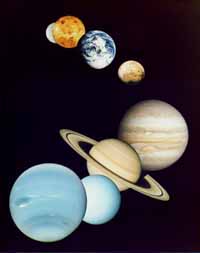Return to Current Site
 |
|
The New Millennium Program focuses on testing high-risk, advanced technologies in space with low-cost flights. Any scientific data returned during the missions are bonuses, as the real science is in the future missions that are enabled by New Millennium's technologies. Deep Space 1 had such a bonus after it completed its mission requirements of testing its technologies. On July 28, 1999, Deep Space 1 flew by asteroid Braille, coming within an amazingly close 26 kilometers of the object. Although the encounter was not a requirement of the mission, the spacecraft was able to collect half of the scientific measurements hoped for, thus adding to our limited knowledge of asteroids. After Deep Space 1 completed its successful primary mission in 1999, NASA sent it on a risky and ambitious extended mission to conduct comet science. In September 2001, Deep Space 1 executed a flawless encounter with comet Borrelly, yielding the best pictures and other scientific data ever collected at a comet, providing scientists with a tremendous advance in our understanding of these intriguing and important parts of the solar system. So Deep Space 1, whose purpose was to test technologies to reduce the cost and risk of future science missions, managed to have a scientifically very rewarding mission in its own right. |

